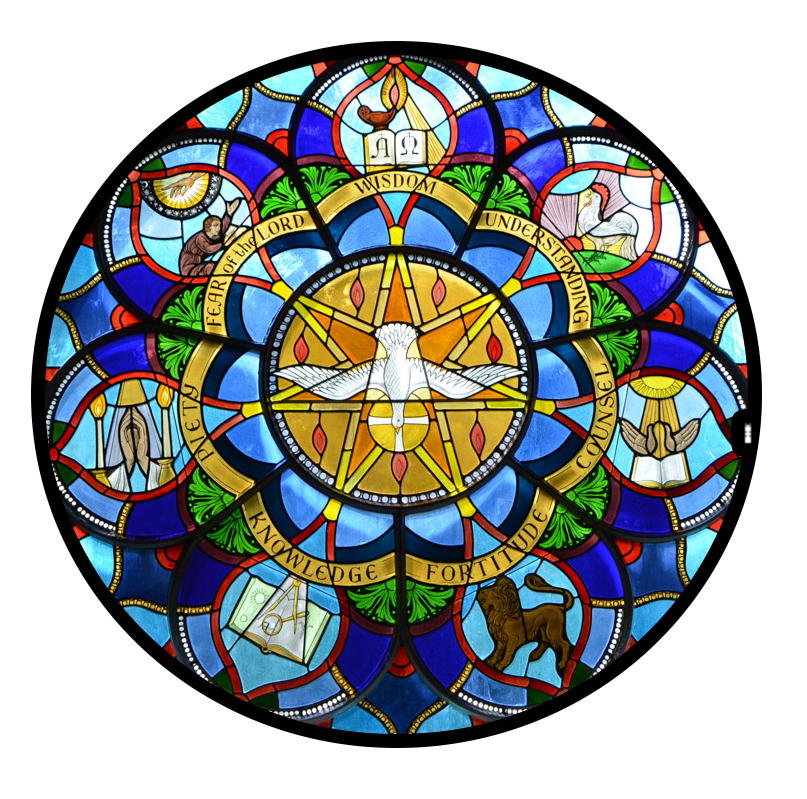.
Adoration of the Blessed Sacrament
Our Lord waits for you to come and spend some time with Him.
Eucharistic Adoration is adoring or honoring Christ fully present in the Eucharist.
We know as Catholics that the Eucharist is Jesus truly and fully present - Body, Blood, Soul, and Divinity! Eucharistic Adoration is the contemplation of this Mystery of Christ truly present before us.
During Eucharistic Adoration, we are invited to look upon our Lord as He looks back at us. We "watch and wait" just as Christ asked His disciples to do in the Garden of Gethsemane. As we enjoy silence or prayer in His Presence, we open ourselves to His Grace which flows to us in a unique way through the Eucharist. Worshiping the Eucharistic Jesus brings us into a fuller relationship with Him and invites Christ to gently transform us into the person God intends us to be.
In Eucharistic Adoration, we reach out to God as He ever more fervently seeks us.
-
What is Adoration?
Eucharistic Adoration is the worship of Jesus Christ in the Holy Eucharist outside of the Mass. The consecrated Host (which has become Jesus Himself) is displayed in a Monstrance on the Altar so that all can see and pray in the presence of Christ
-
Why do we do it?
The answer to that question comes directly out of the Catechism of the Catholic Church: “Adoration is the first attitude of man acknowledging that he is a creature before his Creator. It exalts the greatness of the Lord who made us and the almighty power of the Savior who sets us free from evil. Adoration is homage of the spirit to the ‘King of Glory,’ respectful silence in the presence of the ‘ever greater’ God. Adoration of the thrice holy and sovereign God of love blends with humility and gives assurance to our supplications.” (CCC 2628)
-
What to bring
Yourself, with an open mind and heart.
You can also (but do not have to) bring:
- A Rosary.
- A Bible, or other spiritual reading.
- A prayer journal and pen.
-
How do we do it?
We can show our adoration to God in many ways, but in Eucharistic Adoration, we spend time adoring the real presence of Christ in the Eucharist. Here are a few ideas for how to spend this time well:
1. Enter in silence, and in reverence toward the Blessed Sacrament. Remember that it is God Himself who is really, truly, and substantially present in the Consecrated Host.
2. Begin with a prayer to prepare your heart, and take a few moments to adjust from the noise of the outside world to the silence and peace of Christ’s presence.
3. Spend a few minutes in spiritual reading. It can be from the Gospels, a reflection from a prayer book, or a few lines of the Catechism of the Catholic Church. Read until something strikes you. Then, after some reflection, stay in silence and meditate on what you have just read.
4. Writing in a prayer journal is something that many people find helpful. Think of the practice as writing a letter to God. Deliver your worries to Him or write to Him about things that are going well.
5. Pray the Rosary. Contemplating the mysteries of Jesus’ life in the Rosary is to contemplate the mystery of Jesus in Blessed Sacrament, whom we praise in Adoration. Or pray the Chaplet of the Divine Mercy, or another devotion.
6. Don’t be afraid to just be quiet, silent, and alone with the Lord, and just to “bask” in the beautiful, peaceful presence of Christ in the Holy Eucharist.
7. When you are ready to leave, offer to the Lord a departing prayer. This can be a spontaneous prayer of thanksgiving, or you can privately use the prayers of Benediction, which is given at the end of Solemn Adoration.
* Adapted and taken from stcathtrumbull.com/eucharistic-adoration
An Invitation from Carol Pinard, Parishioner of Holy Spirit
“For the past few years on First Friday’s I come and sit before Our Lord in Eucharistic Adoration. The more time I spend before the Lord the more I’ve become aware of His presence in my life. The time I spend in silence with the Lord affords me the opportunity to praise Him as my Lord and my God, to thank him for so many blessings, both those that are apparent and those that aren’t due to my limited range of vision. I talk to him of my needs and those of my family and friends, then listen to him speak in the silence of my heart. I leave knowing I am loved, filled with peace, joy and contentment knowing all is in His hands as I try to live my daily life more focused on His will for my life.
I would like to invite each of you to leave behind the distractions and noise of the world to
come and experience the power of time spent in the presence of the Lord. He will transform your life."
The Holy Eucharist
The liturgical life of the Church revolves around the sacraments, with the Eucharist at the center (National Directory for Catechesis, #35). At Mass, we are fed by the Word and nourished by the Body and Blood of Christ. We believe that the Risen Jesus is truly and substantially present in the Eucharist. The Eucharist is not a sign or symbol of Jesus; rather we receive Jesus himself in and through the Eucharistic species. The priest, through the power of his ordination and the action of the Holy Spirit, transforms the bread and wine into the Body and Blood of Jesus. This is call transubstantiation.



